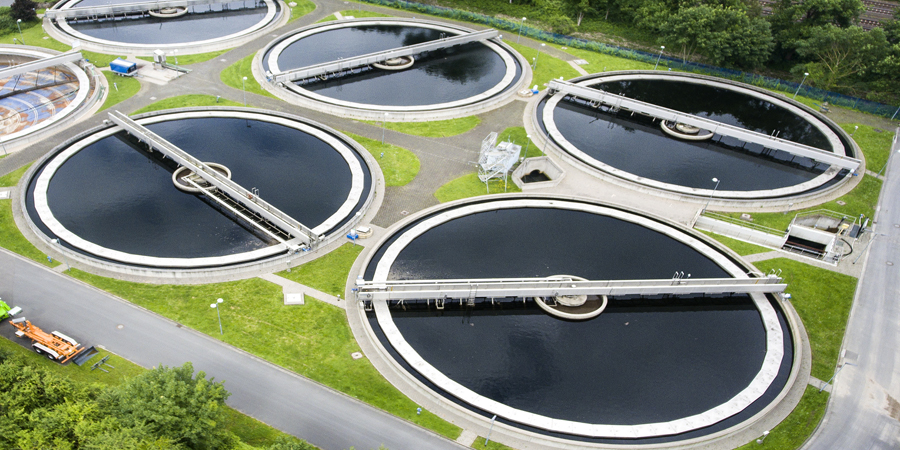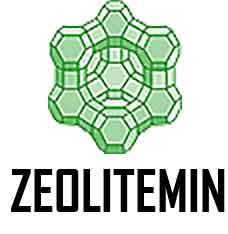
Filter material is the general name of water treatment filter material, mainly used for domestic sewage, industrial sewage, pure water, and drinking water filtration.
Natural zeolite is a kind of Aluminosilicate mineral with a white or brick red appearance. It belongs to a weak acid cation exchanger. After the artificial introduction of active components, it has a new ion exchange or adsorption capacity, and the adsorption capacity is also increased accordingly. It is mainly used for the softening treatment of water for medium and small-sized boilers to remove Ca and Mg ions in water, so as to reduce the formation of scale in the boiler, reduce the corrosion of water testing metal, and extend the service life of the boiler. It can be used to remove phosphorus, lead, and hexavalent chromium in wastewater treatment. The zeolite after failure can be used for the reuse of concentrated brine after countercurrent regeneration.
The Technical indexes of zeolite filter material are as follows:
Adsorption properties
- The Specific surface area (m2/g): 122-355
- The adsorption capacity of SO2 is 47-58.2ml/g.
Cation exchange(CEC) performance
- NH4+ exchange capacity (mmol / 100g)
- Highest /lowest /Normal or Average: 150 /109 /127/58
- K+ exchange capacity (mg / 100g)
- Highest /Normal or Average: 18 /7513/ 19
Catalytic performance
Zeolite has a large specific surface area and good crystallization performance. The toluene disproportionation catalyst made of modified zeolite is feasible and has high catalytic activity for p-xylene isomerization.
Acid and Heat Resistance
Acid Resistance: At 90 ℃ for 4 hours, when hydrochloric acid concentration is 1N, zeolite is not damaged; when hydrochloric acid concentration is 2N, zeolite is partially destroyed.
Heat Resistance: At 250 ℃, the crystal lattice changes slightly; At 500 ℃, the crystal lattice is basically destroyed; at 750 ℃, the lattice is completely destroyed; the experimental results show that the lattice damage temperature is 250 ~ 500 ℃, and the ignition time is 4 hours.
In the practical application process, zeolite can effectively remove COD, ammonia nitrogen, and turbidity. The optimal hydraulic load is 2.2m/h (hydraulic retention time is 1.4 h), and the removal rates of COD, ammonia nitrogen, and turbidity are 73.9%, 88.4%, and 96.2% respectively.
The corresponding average effluent concentrations are 43.4 mg/L, 3.5 mg/L, and 3.7%, respectively NTU, which can meet the requirements of relevant indicators in the recommended value of cooling water quality proposed by the State Environmental Protection Administration of China.
Zeolite and sand filter media were used as BAF filter media to treat textile wastewater.
The results of cell count showed that the number of Nitrosomonas and nitrobacteria on zeolite filter was 3.0 × 108 CFU / ml and 2.2 × 109 CFU / ml respectively, while that on the sand filter was 4.5 × 108 and 6.5 × 108 CFU / ml, respectively In terms of the number of nitrifying bacteria, zeolite filter media is more suitable for microbial nitrification. In addition, from the removal of organic matter and TkN, the effect of BAF with zeolite as filter material is better than that with sand as filter material. BAF with zeolite as filter material can remove 86% ~ 92% cod, 99% BOD and 77% ~ 79% chroma in textile wastewater. The reason is that the specific surface area of natural zeolite filter material is larger than that of sand filter material, which is suitable for the attachment of microorganisms. Moreover, the ion exchange capacity of zeolite filter material is strong, which can adsorb NH4 + in water. The growth of nitrifying bacteria suitable for the environment can transform NH4 + It is nitrate. The particle size can be made according to the needs, the flow pattern is good, the filtration cycle is long, the backwashing is easy, and the pollution interception ability is strong.
Zeolite as Sewage treatment agent
Zeolite as a wastewater treatment agent is a new multi-functional sewage treatment material, which is made of high-grade natural zeolite after activation and modification. It has a great specific surface area, strong adsorption capacity, and ion exchange capacity. It has adsorption and catalytic degradation capacity for organic pollutants in sewage and has strong adsorption and solidification ability for heavy metal and other material pollutants Good chemical stability, and no decomposition, no deterioration, no pollution of water. It can effectively remove COD, BOD5, NH3-N, TP, suspended solids, and other substances in water, and effectively remove heavy metals (cadmium, chromium, mercury, lead, arsenic, etc.) and radioactive substances in water, and has the functions of decolorizing, and deodorizing.
The application scope of zeolite wastewater treatment agent is as follows:
- Urban river / Lake polluted water treatment
- Urban landscape water pollution control
- Urban water pollution emergency treatment
The main functions are as follows:
Special chemicals: the patented compound special water treatment agent is made of natural zeolite as the main raw material through modification, compounding and comprehensive processing, without secondary pollution. Effectively remove cadmium, chromium, mercury, lead, arsenic and other heavy metal pollutants, as well as radioactive pollutants.
Through the adsorption and ion exchange reaction between zeolite and heavy metal elements, heavy metal pollutants such as cadmium, chromium, lead, arsenic, mercury and radioactive elements such as strontium and cesium can be solidified and passivated in the pore cavity of zeolite. Effectively remove organic matter, ammonia nitrogen, chlorine, phosphorus and other harmful substances in water.
- Significantly reduce the chemical oxygen demand (COD) in water, greatly improve B / C and improve water quality.
- Effectively remove COD, BOD5, NH3-N, TP, suspended solids and other substances in water
- Effectively remove heavy metals (cadmium, chromium, mercury, lead, arsenic, etc.) and radioactive substances in water.
Zeolite use in Constructed Wetland
As the matrix filler of traditional constructed wetland, the adsorption of soil, sand and gravel on pollutants is difficult to meet the needs of improving modern environmental pollution. Zeolite filter material, as a new multi-functional sewage treatment material, is made of high-grade natural zeolite after activation and modification. It has great specific surface area, strong adsorption capacity and ion exchange capacity.
It has adsorption and catalytic degradation ability for organic pollutants in sewage and has strong adsorption and solidification ability for heavy metal and other pollutants Good chemical stability, and no decomposition, no deterioration, no pollution of water. It can effectively remove COD, BOD5, NH3-N, TP, suspended solids, and other substances in water, as well as heavy metals (cadmium, chromium, mercury, lead, arsenic, etc.) and radioactive substances in water, and has the functions of decolorization, deodorization, and odor removal.
The combination of pretreatment and constructed wetland is of great significance for wetland environmental governance. It can not only carry out primary treatment to the wetland inflow to ensure the safe and stable operation of the field system; more importantly, it can ensure the operation effect of the wetland system in each season by adjusting the treatment depth of the pretreatment, which greatly reduces the operation cost, and realizes the effect of purifying the water quality into the river and creating ecological river landscape.
Zeolite use in River treatment
Zeolite can be used as water quality improver: zeolite powder for sewage treatment can effectively capture radioactive iodine, cesium, strontium precipitation dissolved in water. Zeolite powder has roughly the same pore as cesium ion, which improves the efficiency of radioactive cesium capture.
First of all, zeolite has a strong adsorption capacity for ammonia nitrogen. After pretreatment, industrial salt activation, roasting, and other processes, the modified zeolite can remove trace ammonia in water and make ammonia water exceed the national drinking water standard. The modified zeolite can also remove fluoride and fluorine in water by different methods. After the treated water quality reaches the national drinking water standard, the problem of high fluorine water in China can be solved.
In addition, adjusting the proportion of silicon and aluminum in zeolite can also remove residual chlorine and excessive heavy metals in tap water and iron. Especially printing and dyeing wastewater is one of the main harmful and refractory industrial wastewater in China.
The main pollutants include dyes, size, auxiliaries, fiber impurities, oil agents, acid-base, and inorganic salts. It is characterized by a large amount of wastewater, complex water quality, high concentration of organic matter, difficult biodegradation, deep color, rapid and irregular water quality change, among which the dye pollution is the most serious.
When the biological aerated filter (BAF > process is used to treat printing and dyeing wastewater with natural zeolite as filter material, the removal rate of ammonia nitrogen, COD, SS, total nitrogen, and chroma can reach a high value.
And domestic experts through experiments show that: compared with natural zeolite, the removal rate of ammonia nitrogen and positive phosphorus is greatly improved, especially the removal rate of positive phosphorus is increased by 10 times, and the highest removal rate can reach 99%. The optimum pH value of the modified zeolite for simultaneous nitrogen and phosphorus removal is about 4.
Good Result
The removal rate of ammonia nitrogen and positive phosphorus is 83% and 90% respectively. When the influent pH is in the range of 4 ~ 8, the effluent is between 6 ~ 9. The adsorption saturated zeolite can be regenerated efficiently, and the removal rate is only reduced by 7% after 7 times of regeneration.
Therefore, the modified zeolite is a new and beneficial exploration and attempt for the treatment of nitrogen and phosphorus micro polluted water. In addition, the molecular ecological analysis showed that the diversity, richness, and uniformity of DNA of microorganisms in the activated sludge system were improved after adding zeolite.
For the normal operation activated sludge system impacted by ammonia nitrogen for a short time, by adding 50 mg / L zeolite powder, the treatment system can be restored to the state before treatment in a short time.
Reference:
